A unique aspect of numerous mushrooms lies in their symbiotic relationship with specific plants. Take, for instance, species of mushroom that grow on birch Trees and also under the birch trees. This dynamic interaction can yield both advantages and drawbacks for the birch tree, with the mushrooms exhibiting both edible and poisonous varieties.
Join us as we delve into the fascinating world of Mushrooms that grow on and under birch Trees.
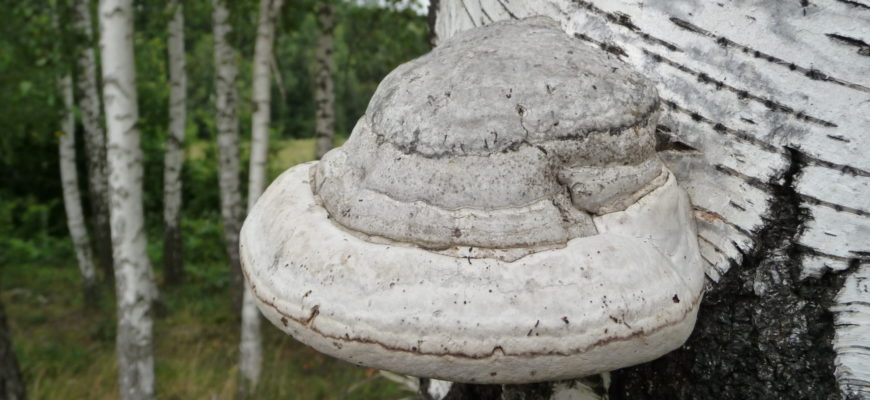
mushroom that grow on birch Trees and under the birch trees
Table of Contents
Mushrooms that grow on birch trees
Some mushrooms are parasitic and grow directly on tree trunks or branches. Often in the forest, you can find mushroom growing on a birch tree., from the trunks of which you can see the gray caps of oyster mushrooms or large bumpy outgrowths of the tinder fungus.
Let discover What type of mushroom typically grows on birch trees?:
Chaga or birch mushroom
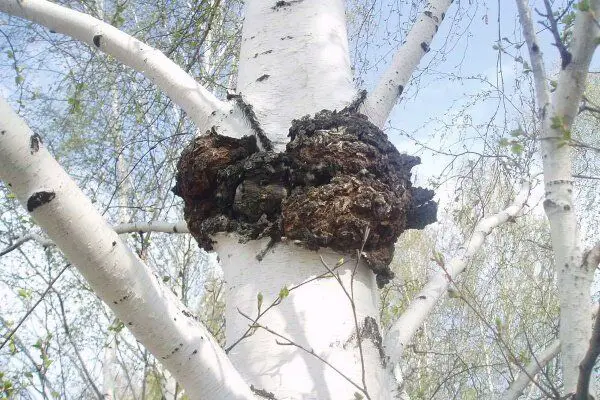
Chaga, also known as the birch mushroom or tinder fungus, is a basidiomycete commonly found on damaged birch trees. While it occasionally appears on other tree species, birch remains its primary host.
Characteristics:
- Appearance: Large, dark gray outgrowth with a bumpy texture.
- Habitat: Thrives in deciduous and mixed forests across the Northern Hemisphere.
- Reproduction: Spores infiltrate diseased trees, forming distinct growths over several years.
- Structure: Irregular shape with a cracked surface; internally intertwined with colorless mycelium.
Chaga’s unique features and widespread distribution make it a fascinating subject for exploration and research in fungal ecology.
Here is the list of Mushrooms that Grow under Silver Birch Trees.
oyster mushrooms grow on birch tree
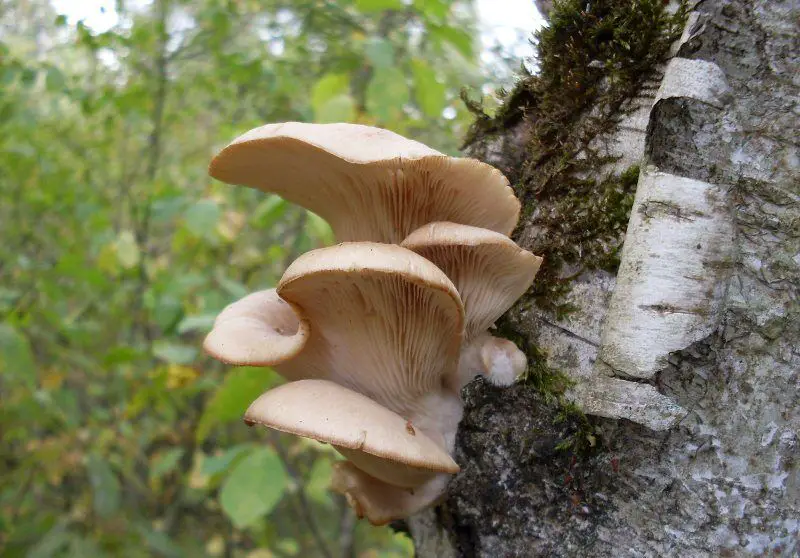
Oyster mushroom that grow on birch Trees
Most people ask question Do oyster mushrooms grow on birch trees? Yes, Oyster mushrooms, a culinary delight, often thrive on birch trees, boasting fleshy caps up to 15 cm in diameter. Their solid, rounded structure sometimes takes on ear-shaped or shell-like forms, adding to their allure.
Characteristics:
- Shape: Convex when young, flattening with age.
- Surface: Smooth, occasionally with a delicate bloom.
- Color: Varied, from gray to white, often with hints of brown or yellow.
- Taste: Pleasant, often with a subtle anise aroma.
Oyster mushrooms offer both aesthetic appeal and gastronomic delight, making them a favorite among foragers and chefs alike.
Honey mushrooms that grow on birch
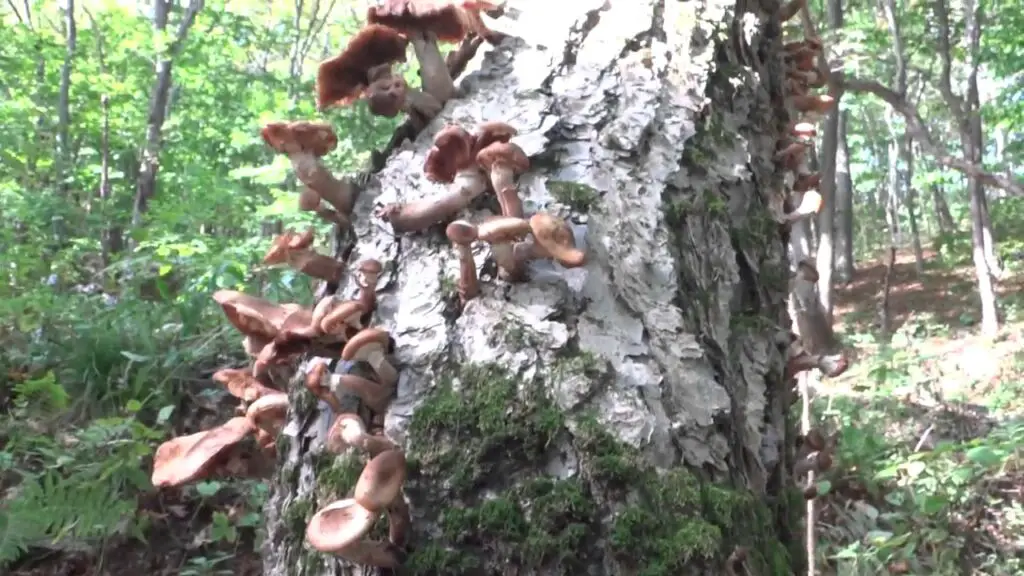
Honey mushrooms, a parasitic species thriving on various deciduous trees, notably infest weakened or deceased birch trees. Recognizable by their plump stalks and modest caps, typically under 10 cm in diameter, these fungi grow abundantly in familial clusters.
Key Characteristics:
- Habitat: Thrives on dead or weakened birch trees.
- Appearance: Small caps with a central tubercle, covered in scales in youth.
- Growth Pattern: Forms large families, distinguishing them from false species.
Honey mushrooms, with their unique characteristics and habitat preferences, offer an intriguing subject for both foragers and mushroom enthusiasts.
Want to know about Mushrooms that Grow in Fall.
Edible Mushrooms that grow under birch trees and on birch trees
Sometimes it is only by the place of growth that an edible mushroom can be distinguished from its poisonous counterpart. Most often in birch groves, there are boletus, russula , volnushki, milk mushrooms.
boletus grow under birch trees
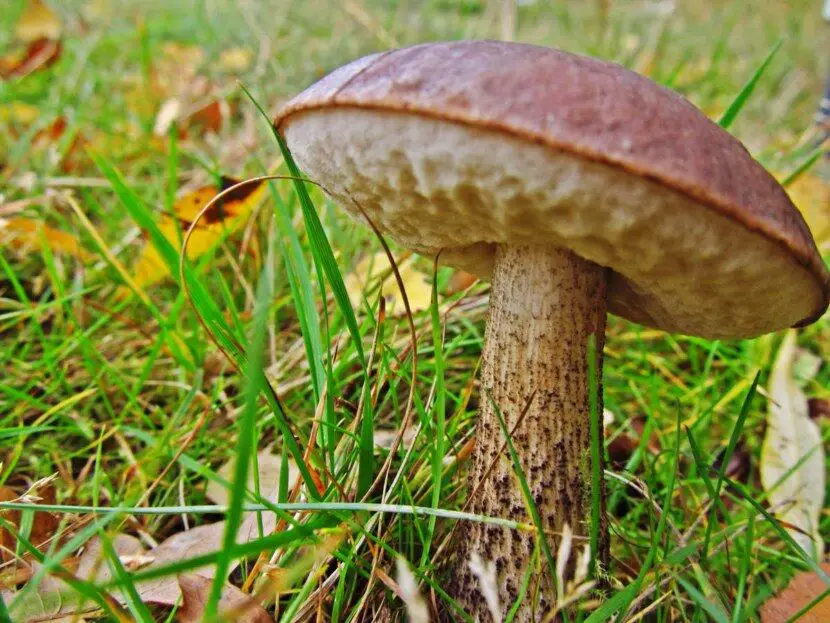
Boletus mushrooms are commonly found near birch roots, boasting a distinctive white or dark brown cap atop a gray cylindrical stem. With approximately 40 varieties in nature, they share a common appearance, featuring smooth, sometimes sticky surfaces and dense, light-colored flesh.
Characteristics:
- Habitat: Exclusive to birch groves, near the tree roots.
- Appearance: White or dark brown cap, gray cylindrical stem.
- Texture: Smooth surface, becoming sticky in wet conditions; dense flesh.
Boletus mushrooms, abundant in birch habitats, offer both culinary delight and a testament to the intricate relationship between fungi and trees.
real breast: A Hidden Gem of Birch Forests
The real mushroom, often overlooked yet highly beneficial, thrives in birch and spruce-birch forests. Characterized by its wide, slimy cap with a central depression, this mushroom offers valuable attributes despite its lack of popularity.
Key Characteristics:
- Habitat: Commonly found in birch and spruce-birch forests, often hidden beneath the forest floor.
- Appearance: Wide, slimy cap with a central depression.
- Harvest Season: Ripe fruit bodies can be harvested from July to September, usually in small groups.
- Flesh: Dense, brittle, and typically white, with milky juice turning yellowish when exposed to air.
Despite its understated presence, the real mushroom boasts a subtle mushroom aroma and offers potential culinary and medicinal benefits.
Porcini Birch tree mushroom edible
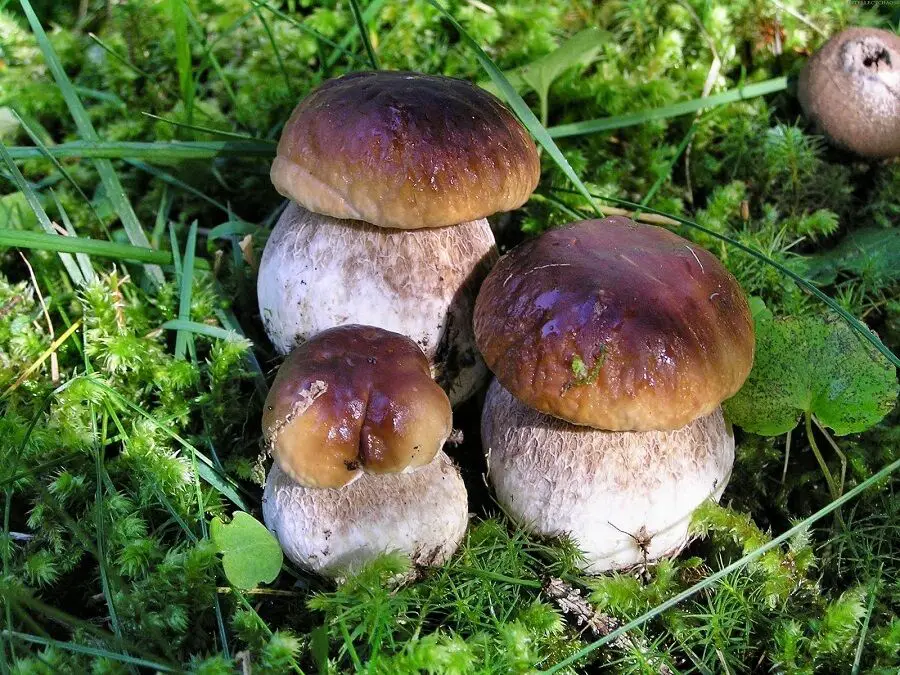
Porcini mushrooms, known for their exceptional taste and nutritional value, are highly prized among mushroom enthusiasts. Some subspecies of porcini form mycorrhiza exclusively with birch trees, enriching the forest floor from June to September.
Key Characteristics:
- Nutritional Value: Considered one of the most nutritious mushrooms available.
- Habitat: Certain subspecies form mycorrhiza with birch trees.
- Appearance: Large cap, up to 15 cm in diameter, with a light brown or yellow color, resembling a pillow that flattens over time.
- Taste: Renowned for their excellent taste qualities, with dense, white flesh and a pleasant mushroom aroma.
While porcini mushrooms are prized for their culinary value across Europe, foragers must exercise caution to avoid confusing them with inedible species like the bile fungus.
We prepared guide on Mushrooms That Grow in Clusters.
Russula scaly
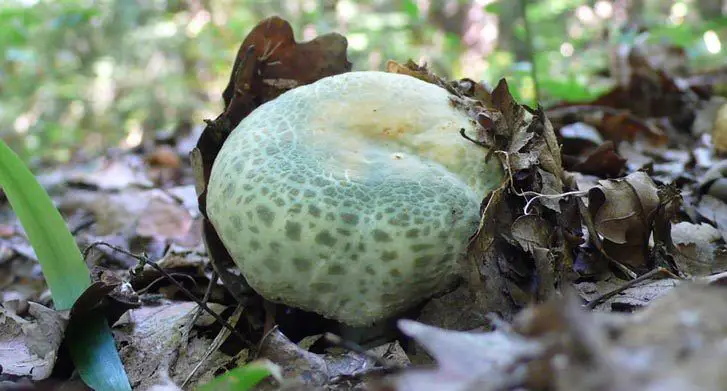
Russula scaly, also known as greenish russula, thrives in deciduous forests, often forming symbiotic relationships with birch trees. Recognizable by its distinctive cap, which can reach up to 15 cm in diameter, this mushroom boasts unique characteristics prized by foragers.
Key Characteristics:
- Habitat: Common in deciduous forests, often symbiotic with birch trees.
- Appearance: Noticeable green or gray-green cap with torn edges.
- Underside: Rare plates with white spore powder.
- Stem: White, dense, and fleshy, with a spicy nutty taste.
- Taste: Renowned for its exceptional flavor, surpassing other russula species.
While Russula scaly is cherished for its culinary potential, foragers must exercise caution to avoid confusing it with similar-looking, potentially toxic species like the pale grebe.
White wave: White mushroom growing on birch tree
The white wave, an uncommon yet visually striking white mushroom growing on a birch tree, can be discovered amidst birch groves during a quiet hunt.. Distinguished by its pale, almost white color and slight fluff on the surface, this mushroom possesses unique characteristics that set it apart.
Key Features:
- Appearance: Small, flat-convex cap with upturned edges, almost smooth or sometimes sticky and slimy at the center.
- Rare Find: Despite growing in families, the white wave is relatively rare, often overlooked by mushroom pickers.
- Preparation: Before cooking, it requires prolonged soaking in water due to its unpleasant bitter taste.
While the white wave may be less common, its distinctive appearance and unique flavor profile make it a worthy discovery for adventurous foragers.
Inedible or poisonous mushrooms that grow under birch trees
Are mushrooms growing on birch trees edible? While birch forests offer a plethora of edible mushrooms, not all mushrooms found under birch trees are safe for consumption.
It’s essential for mushroom enthusiasts, especially beginners, to be cautious and knowledgeable about potentially toxic Fungus that grows on birch trees.
Russula brittle
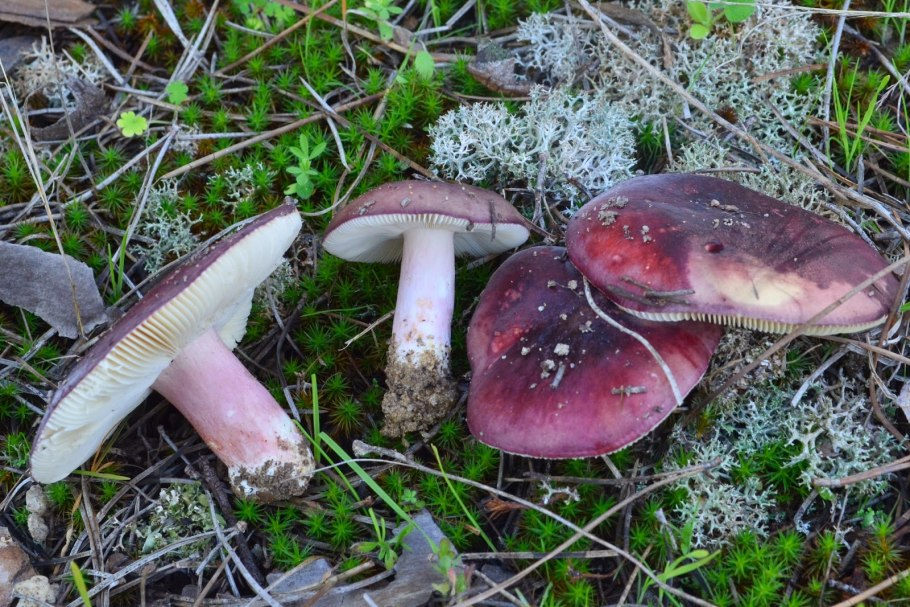
Russula brittle, characterized by its ability to change color and distinctive taste, adds a unique touch to forest ecosystems. While not poisonous, its unpleasant burning taste warrants caution in consumption.
Key Characteristics:
- Appearance: Young fruits start with a convex cap, transitioning to flat or concave as they grow.
- Color Change: Initially rich pink-purple, fades with age.
- Taste: Known for its unpleasant burning taste, discouraging consumption as a culinary mushroom.
- Medicinal Use: Despite its taste, some sources suggest medicinal applications, though consumption should be controlled.
While Russula brittle may have medicinal properties, its disagreeable taste and potential dangers underscore the importance of cautious consumption and proper identification in mushroom foraging endeavors.
Pig thin
The pig’s ear mushroom, often mistaken for a conditionally edible species, is in fact highly poisonous, posing severe health risks to humans. Recognizable by its large, olive-gray cap with a felted edge, this fungus harbors deadly toxins and is best avoided.
Key Characteristics:
- Toxicity: Deadly poisonous, causing severe allergic reactions and potential organ damage.
- Appearance: Large, fleshy fruit with a distinctive olive-gray cap, often resembling a funnel in older specimens.
- Pulp: Dense, soft, or loose, prone to darkening in damaged areas, and susceptible to parasitic infestation.
- Chemical Composition: Believed to contain radioactive isotopes of cesium and copper, further enhancing its lethal properties.
Despite its lack of pronounced smell or taste, the pig’s ear mushroom poses a significant threat to foragers, highlighting the importance of proper identification and caution in mushroom hunting.
Death cap
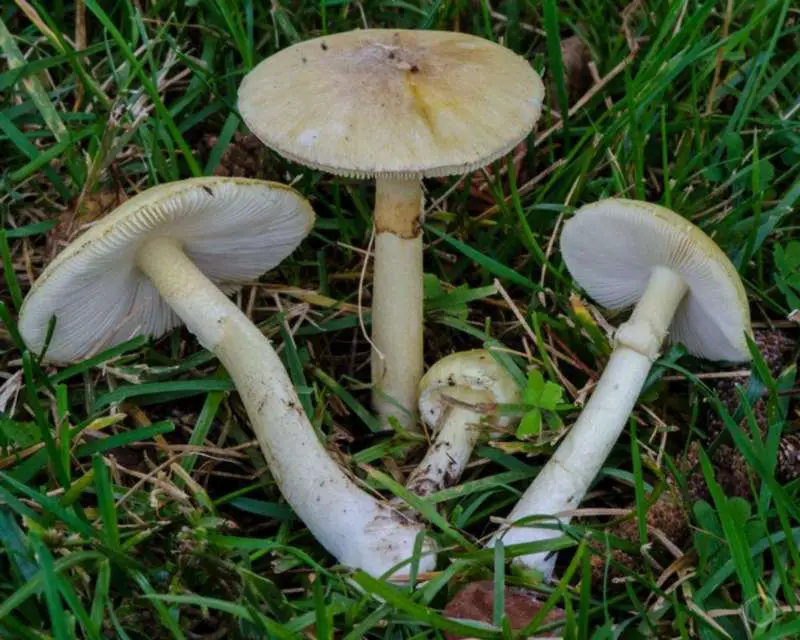
The death cap mushroom, often mistaken for edible varieties like champignon or russula, is a lethal fungus from the Amanita genus. Thriving near birch trees, it poses a significant health risk due to its deadly toxins.
Key Characteristics:
- Toxicity: Deadly poisonous, causing severe organ failure and even death if ingested.
- Appearance: Hat-legged structure with an ovoid or umbrella-shaped cap, often covered with a film in young specimens.
- Distinctive Traits: Pronounced volva and skirt on the stem, though the skirt may sometimes be absent.
Despite its attractive appearance, the death cap mushroom is a dangerous fungus that should be avoided at all costs. Proper identification and awareness are crucial to prevent accidental ingestion and ensure foraging safety.
Mushroom Family, kingdom, etc.
Satanic birch tree mushroom
The satanic mushroom, often found under birch trees, is a perilous fungus with lethal consequences if ingested. Recognizable by its large, fleshy cap and red stem, this mushroom harbors toxins that can cause severe food poisoning or even death.
Key Characteristics:
- Appearance: Large, hemispherical or prostrate cap, typically smooth or velvety, with a dirty grayish or ocher hue. Red, large, and thick stem.
- Flesh: Light, turning blue or reddening upon cuts, with an unpleasant odor resembling onions in older specimens.
- Toxicity: Even a small piece can cause severe food poisoning or death. Heat treatment does not remove its toxicity.
Despite its tempting appearance, the satanic mushroom poses a grave threat to foragers. Awareness, caution, and proper identification are essential to avoid accidental ingestion and ensure foraging safety.
Conclusion
Various species of edible mushrooms grow on birch trees and many under birch trees, so many lovers of “silent hunting” go in search of a crop to the places where these trees grow.
From the delectable oyster mushrooms to the flavorful boletus and russula, birch groves provide ample opportunities for mushroom enthusiasts to fill their baskets with valuable finds. Whether it’s the earthy richness of boletus or the delicate flavor of oyster mushrooms, the bounty of birch forests beckons to those who appreciate the quiet beauty of nature and the savory delights it offers.
